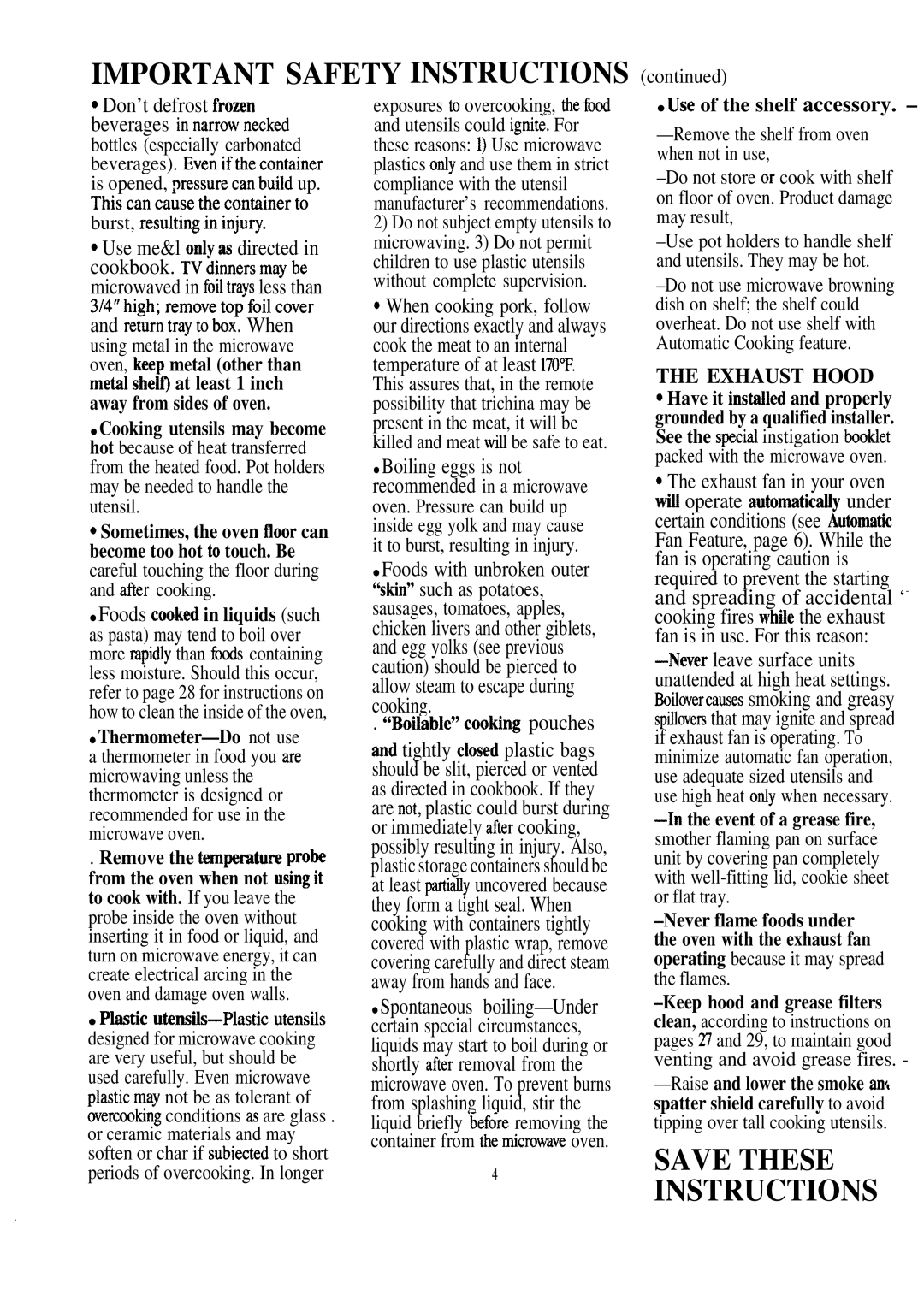JVM172H specifications
The GE JVM172H is a remarkable microwave oven that combines style, efficiency, and innovation, making it an ideal addition to any modern kitchen. This over-the-range microwave not only saves counter space but also provides excellent cooking performance and a sleek design that fits seamlessly into your kitchen décor.One of the main features of the GE JVM172H is its considerable cooking capacity, boasting 1.7 cubic feet of interior space. This ample room allows users to heat up large dishes with ease, accommodating everything from casseroles to family-sized meals. The microwave is equipped with a 1000-watt cooking power system, ensuring that food is evenly heated and cooked quickly, which is crucial for busy households.
The JVM172H employs advanced sensor cooking technology, which automatically adjusts cooking time and power based on the specific moisture level of the food being prepared. This not only simplifies the cooking process but also results in perfectly cooked meals every time. The microwave features several preset cooking options, allowing users to easily choose settings for popcorn, reheating, and defrosting.
For added convenience, the GE JVM172H includes a variety of ventilation options. It comes with a built-in, 300 CFM ventilation system designed to effectively eliminate smoke, steam, and odors from the kitchen. This feature is particularly beneficial for those who frequently cook on the stovetop. The microwave can be installed to vent outside, or it can work in a recirculating mode, depending on the kitchen layout.
The design of the JVM172H is another standout aspect, featuring a sleek and stylish stainless steel exterior that adds a touch of elegance to any kitchen. The bright, easy-to-read LED display panel and simple controls make it user-friendly, allowing for seamless operation.
With its turntable design, the microwave ensures that heat is evenly distributed, resulting in consistent cooking results. Additionally, the JVM172H is equipped with a night-light feature, providing illumination for the stovetop area below.
In summary, the GE JVM172H is a versatile and efficient over-the-range microwave that caters to the needs of modern cooking. With its generous capacity, advanced cooking technologies, effective ventilation system, and stylish design, it stands out as an excellent choice for anyone looking to enhance their culinary experience in the kitchen.

